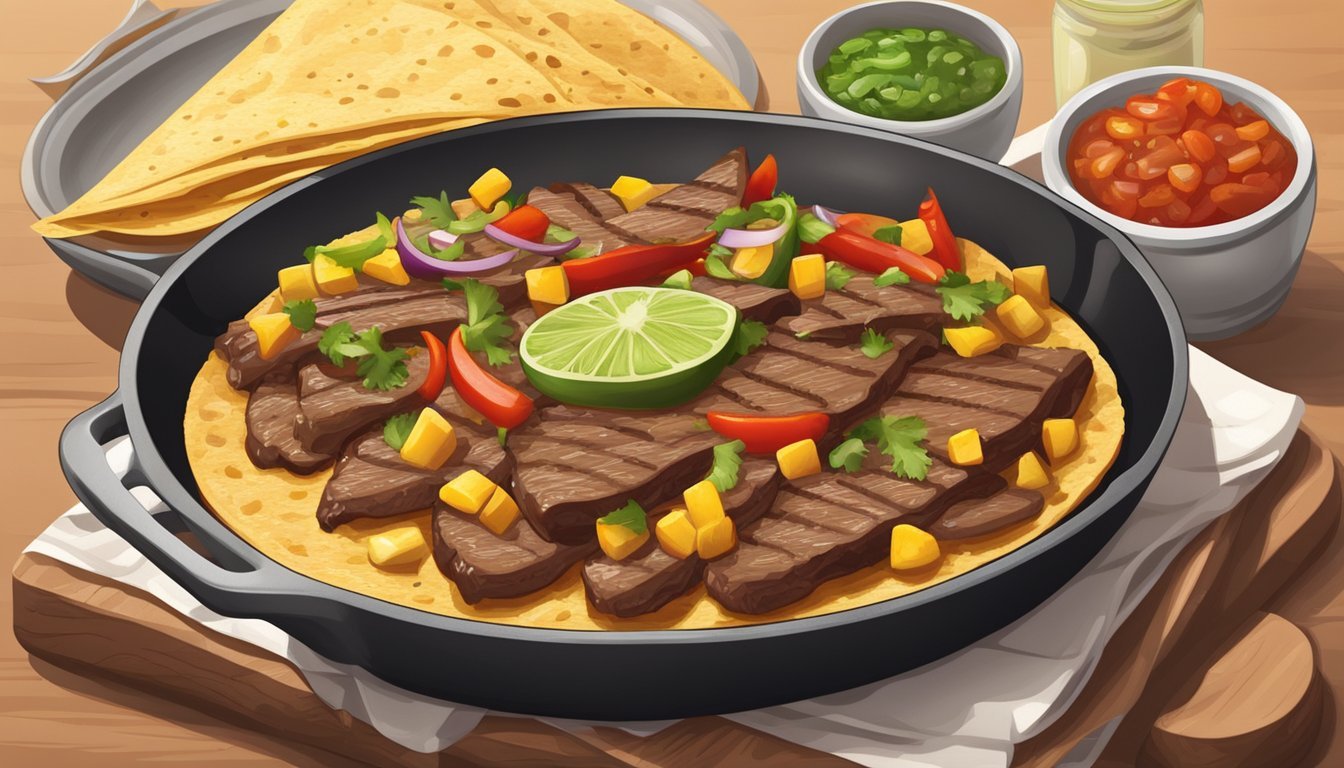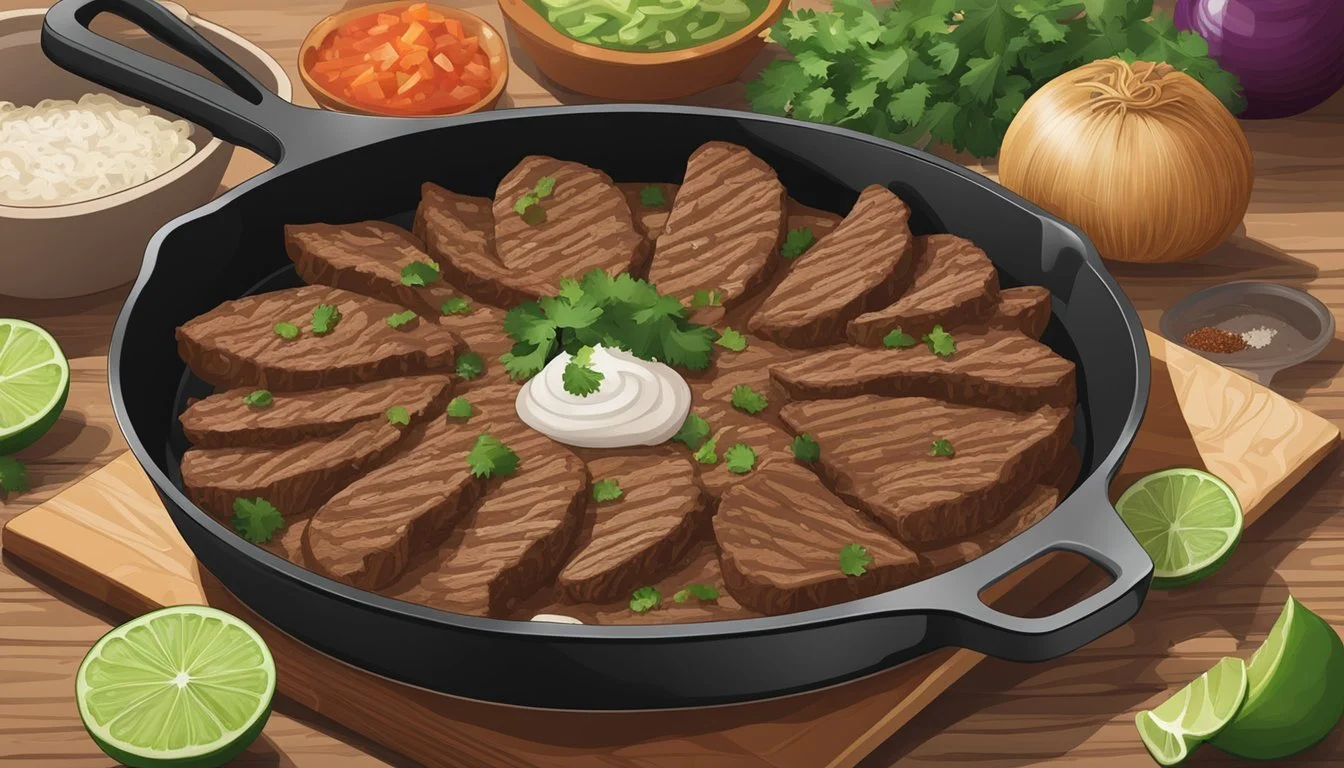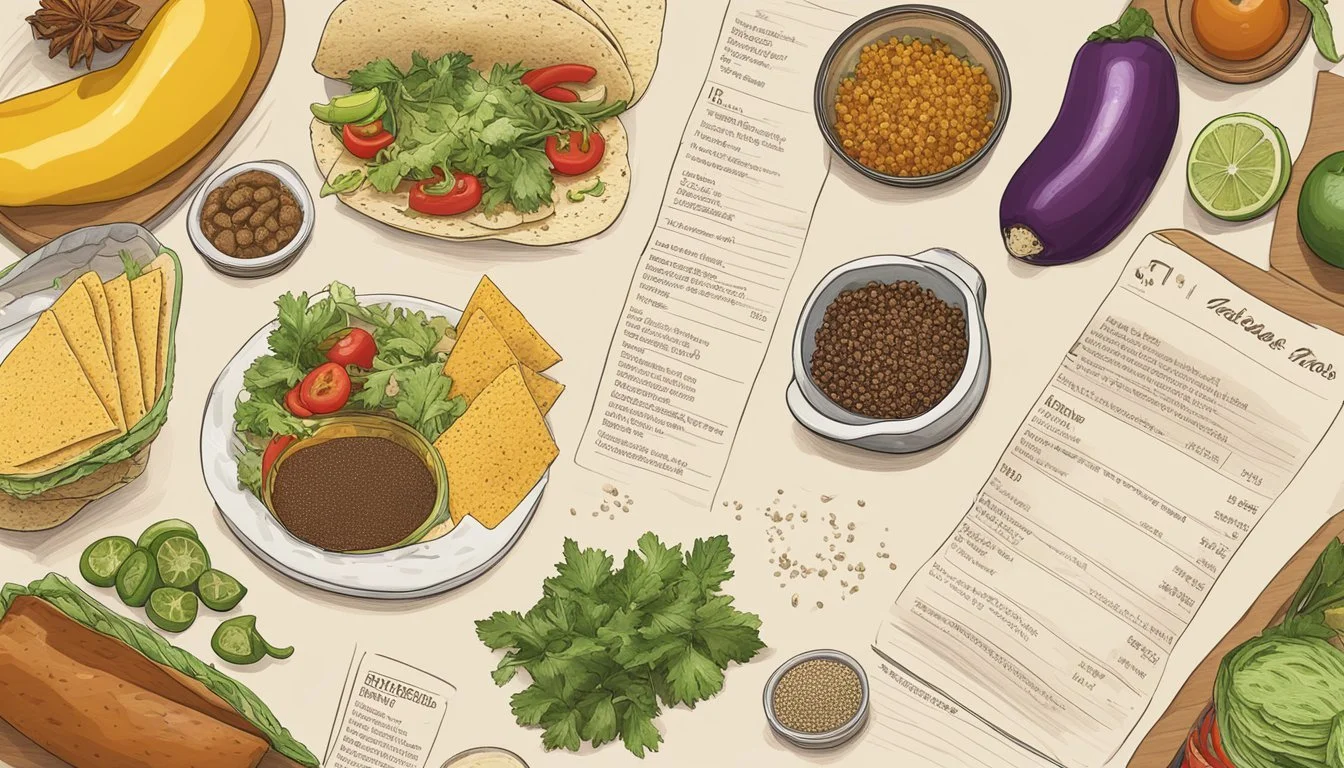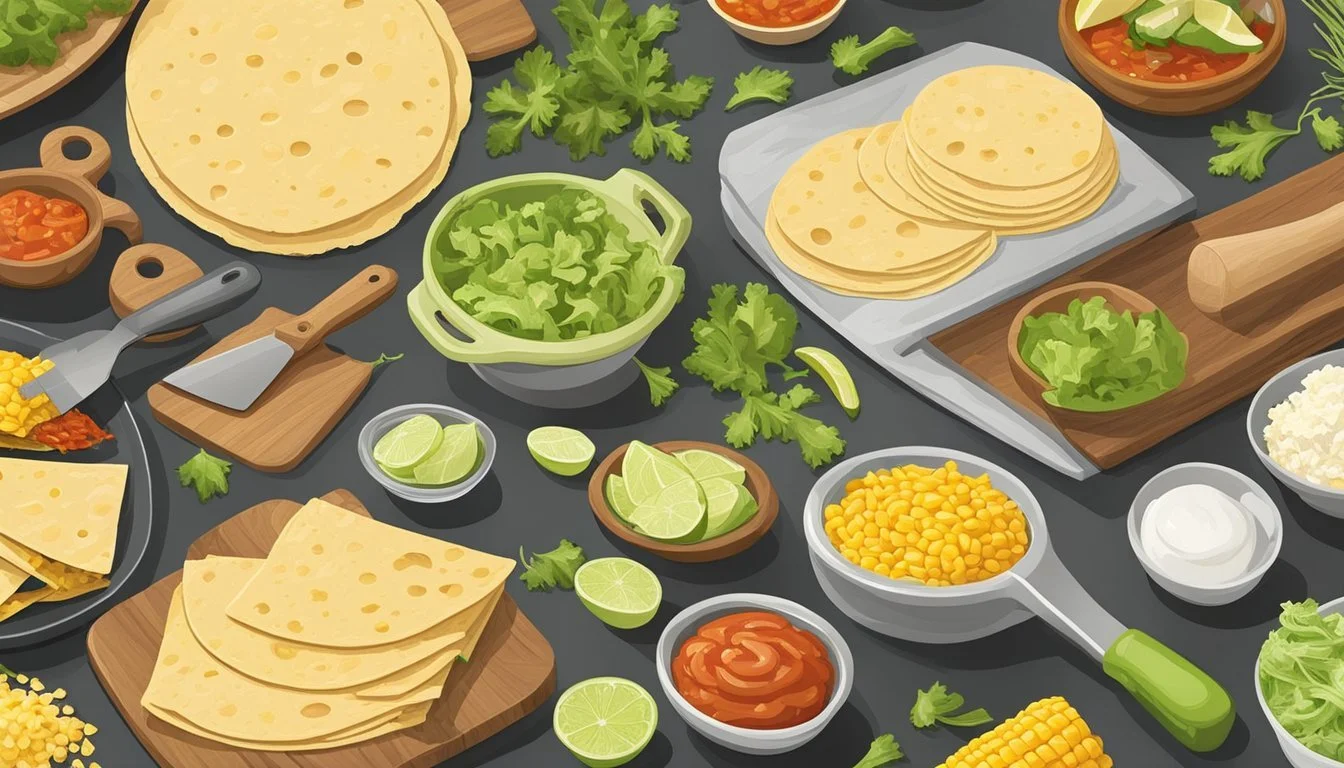How to Make Texas Roadside Tacos
A Simple Guide to Authentic Flavors
Texas roadside tacos, a culinary staple in the Lone Star State, offer a feast of flavors in a handheld package, reflecting the rich Mexican influences on Texan cuisine. These delectable tacos are known for their simplicity, often featuring marinated meat cooked to perfection and served on warm, soft tortillas. The essence of their preparation lies in the fusion of fresh, high-quality ingredients and the time-honored cooking techniques that enhance the natural flavors.
Marinade plays a pivotal role, typically comprising a blend of citrus, spices, and oils that tenderize and infuse the meat with a depth of flavor. Whether it's the traditional flank steak or a tougher cut, allowing the meat to marinate for a sufficient period is a trade secret that promises succulence and taste.
The cooking process, usually involving a grill or a skillet, captures the essence of roadside fare: the charm of open-air cooking that locks in a smoky richness. The meat is then nestled in a tortilla and adorned with a variety of toppings such as diced onions, (What wine goes well with onions?) fresh cilantro (how long does cilantro last?), and a squeeze of lime — a testament to the taco's unfussy, yet vibrant and robust character.
Historical Origins of Texas Tacos
The journey of Texas tacos begins with the rich culinary tradition of Mexican food, which seamlessly blended with Texan culture to create what is widely known today as Tex-Mex cuisine. Tacos, a staple in Mexican diets, found their way north across the Rio Grande, evolving with distinct Texas twists.
San Antonio is often credited as the birthplace of Tex-Mex tacos in Texas. The city's early 20th-century street vendors, commonly known as "chili queens," introduced their Mexican-inspired dishes to a broader audience, laying the groundwork for tacos' popularity among Texans.
As the intersection of Spanish and Native American influences, Tex-Mex tacos incorporate local ingredients and Texan tastes. For instance, the fusion often manifests in fillings like beef brisket (What wine goes well with beef brisket?) or the hearty use of cheese, while maintaining traditional elements such as corn tortillas.
Ingredient Contribution Beef Emphasizes Texas' cattle ranching legacy Cheese Adds a Texan twist to Mexican flavors Corn Tortillas Honors the Mexican origins
In essence, Texas tacos are a culinary testament to history's blending of cultures. Their undeniable appeal lies in the harmony between Mexican authenticity and Texan innovation. The result is a dish beloved across the state, often consumed in roadside stands, family kitchens, and festive gatherings alike.
Choosing the Right Ingredients
The success of Texas Roadside Tacos hinges on the freshness and quality of ingredients. From the choice cuts of meat to the crispness of vegetables, each component plays a crucial role in creating authentic flavors that define these iconic hand-held delights.
Meat Selection
When making Texas Roadside Tacos, the most common proteins include beef, chicken, and pork. For beef, choices range from carne asada, which is thinly sliced sirloin or chuck steak, to barbacoa, usually made from tender, slow-cooked beef. Lean ground beef or seasoned ground beef is also popular for a quicker preparation. Chicken is often marinated and grilled, while pork may be cooked slowly to make fillings like tacos al pastor.
Tortillas and Shells
The foundational element of any taco is the tortilla or shell. For Texas Roadside Tacos, authentic corn tortillas made from fresh masa provide a traditional taste and texture. Flour tortillas may also be used and are popular for their pliability and slightly chewy texture. Homemade tortillas tend to elevate the overall experience, but store-bought versions can suffice if they are of high quality.
Fresh Vegetables and Herbs
Vegetables add crunch, color, and freshness to your tacos. Common choices include diced tomatoes, chopped onion (red or white), and shredded lettuce or iceberg lettuce. Cilantro is a staple herb that contributes a bright, lemony flavor. For those who enjoy a bit of spice, jalapeño peppers can be thinly sliced and added for heat.
Cheese and Dairy
Cheese is often generously sprinkled over the filling, with shredded cheese varieties such as cheddar or Monterey Jack being favorites. Dollops of sour cream can help to balance spiciness and add a creamy texture to the tacos.
Spices and Seasoning
The right blend of spices and seasonings is critical. Essential spices include kosher salt, chili powder, ground cumin, and dried oregano. Adjust the quantities to suit taste preferences, and for convenience, a pre-made taco seasoning mix can work if it doesn't contain too much sodium. Black pepper and cayenne pepper are optional for those who prefer extra heat.
Preparing the Tacos
In crafting authentic Texas roadside tacos, attention to detail is essential in every step, from simmering the meat with flavorful spices to carefully assembling the taco with fresh ingredients that elevate both taste and texture.
Cooking the Meat
For the protein component, it is traditional to use ground beef or a well-seasoned carne asada, which involves thinly sliced steak. To prepare carne asada, marinate sirloin or chuck steak in a blend of orange zest and salt before grilling to achieve a smoky flavor and tender texture. For ground beef, cook it with diced red pepper and onion until browned and then drain excess grease. Barbacoa, another popular meat choice, is slow-cooked until it's succulent and easily shreddable.
Assembling the Tacos
Once the meat is cooked, warm corn tortillas until they're soft and pliable. This can be done on a griddle or skillet over medium heat.
Lay the tortilla flat.
Spoon in the meat as the main filling.
Ensure a balance between meat, toppings, and tortilla for the perfect bite.
The structural integrity of the taco is crucial; overfilling can lead to breakage or spillage during consumption.
Adding Flavor with Toppings
Toppings for Texas roadside tacos are more than just additions; they're integral for achieving an authentic flavor profile and textural contrast. Begin with fresh cilantro and diced onions for a sharp, fresh taste. Then, add salsa—whether it's a robust red salsa or a tangy tomatillo variety.
Consider this table for combining toppings:
Toppings Flavor Texture Cheese Melty, rich Creamy, soft Lettuce Fresh, crisp Crunchy Tomatoes Bright, acidic Juicy Guacamole Creamy, rich Smooth Beans Earthy, hearty Creamy Jalapeños Spicy, tangy Crunchy Sour Cream Tart, cooling Creamy
Finish with a squeeze of lime for a zesty kick. Each element should serve to complement the main flavors and textures of the meat and tortilla, creating a harmonious and satisfying taco experience.
Regional Variations and Styles
In exploring the variations and styles of tacos within Texas, one finds a rich tapestry of flavors shaped by local culture, history, and available ingredients. This section delves into the nuances of Tex-Mex compared to traditional tacos, the influences street cuisine has had, and the modern adaptations chefs across Texas have infused into this iconic dish.
Tex-Mex versus Traditional Tacos
Tex-Mex cuisine, an amalgamation of Mexican food with Texas farm and cowboy fare, has given rise to a distinctive style of tacos known for their hearty fillings and bold flavors. Traditional tacos, often featuring simpler, fresh ingredients, are rife in places like San Antonio and Brownsville. They lean more towards the authentic Mexican recipes passed down through generations. Conversely, Tex-Mex tacos are recognized for their liberal use of cheeses, beef, and complex sauces.
Ingredients Commonly Found in Tex-Mex Tacos: Ground beef, cheddar cheese, black beans, and wheat flour tortillas.
Traditional Taco Ingredients: Fish, carnitas, cilantro, onions, and corn tortillas.
Street Tacos and Their Influence
Street tacos are a quintessential aspect of Texas roadside dining, often served out of taco trucks or small stands, particularly in urban areas such as Los Angeles and California's broader street food scene. Carne asada street tacos are a staple, synonymous with the laid-back yet vibrant outdoor eateries that dot the sidewalks. The influence of these establishments can be seen in the widespread availability of tacos throughout Texas.
Seafood street tacos often found in coastal regions, utilize the freshest catches.
Breakfast tacos, a Texas innovation, combine traditional breakfast ingredients, such as eggs and bacon, with a tortilla.
Contemporary Twists on the Classic
Chefs across Texas are now adding contemporary twists to classic tacos, integrating global flavors and fusion techniques. This has led to innovative combinations, like Asian-Mex tacos, which may include teriyaki chicken or other Asian-inspired fillings. Vegetable oil, rather than traditional lard, is commonly used in cooking, providing a lighter alternative that caters to health-conscious consumers.
Notable Innovations: Birria sisig tacos, combining Filipino flavors with Mexican-style tacos.
Key Cities for Contemporary Tacos: Los Angeles and Austin, noted for their experimental and health-oriented menus.
Serving and Enjoyment
Texas Roadside Tacos offer a vibrant culinary experience that can be enhanced by a thoughtful presentation and complementary sides. A well-planned taco bar sets the stage for guests to customize their tacos while the right pairings and nods to cultural significance round out the dining experience.
Creating a Taco Bar
A successful taco bar features a wide array of fillings, toppings, and sauces, displayed in varying sizes of dishes for ease of assembly. For the fillings, one might feature seasoned ground beef, marinated chicken, and perhaps a smoky brisket to give a nod to traditional barbecue. Bowls of toppings like shredded lettuce, diced tomatoes, chopped onions, and shredded cheese should be plentiful. Ramekins are perfect for smaller toppings such as jalepeños or pickled onions, and for sauces, ranging from mild to spicy salsas and cooling sour cream.
Essentials and extras:
Tortillas: Keep them warm and pliable in a tortilla warmer.
Guacamole: Freshly mashed with a squeeze of lime juice.
Beans: Black or pinto, seasoned and possibly refried.
Pairings and Accompaniments
Beverages:
Mexican beers or tequila-based cocktails complement the robust flavors.
Non-alcoholic options could include agua frescas in flavors like hibiscus or tamarind
Sides:
Taco salad: A lighter alternative served with similar ingredients and a crispy tortilla bowl.
Rice and beans: Classic staples providing a comforting balance.
Taste Enhancers:
A spritz of lime juice over a taco can brighten flavors.
Sprinkle of fresh cilantro for an aromatic touch.
Tacos in Popular Culture
The taco has cemented its place in popular culture, often portrayed as a casual and fun food that brings people together. Cookbooks and food writers like Mando Rayo have contributed to the taco's celebrated status, highlighting regional variations such as Mexican-style tacos, hearty breakfast tacos, and the ever-popular barbecue tacos indicative of Texas culinary traditions. Events such as taco festivals celebrate this dish, further solidifying its cultural impact and the joy it brings to culinary enthusiasts.
Nutritional Information
Texas roadside tacos typically consist of a protein such as beef, chicken, or pork, wrapped in a tortilla and often garnished with various toppings like cheese, lettuce, and salsa. The nutritional content of a taco can vary significantly based on the ingredients and serving size.
Protein: The meat component, usually ground beef or shredded chicken, is a good source of protein. A single serving of meat in a taco is approximately 3 ounces and provides about 21 grams of protein.
Carbohydrates: The tortilla, either corn or flour, contributes to the carbohydrate content. A typical corn tortilla contains around 10–15 grams of carbohydrates, while a flour tortilla may contain 15–20 grams.
Fiber: Corn tortillas are a decent source of fiber, with about 1-2 grams per serving. However, flour tortillas generally have less fiber unless they are specifically labeled as high-fiber.
Fats: The fat content largely comes from the meat and any added cheese or toppings. If using lean meat, the fat content can be reduced. A standard serving of ground beef could contain roughly 5-10 grams of fat.
Sodium: Tacos can be high in sodium due to added salt in the meat seasoning, cheese, and any processed toppings. It's important for individuals to be mindful of their sodium intake.
Cholesterol: Depending on the choice of protein and toppings, the cholesterol levels can vary. Lean meats will have less cholesterol than fatty cuts. On average, a taco could have between 50 to 70 milligrams of cholesterol.
Calories: A single taco can range from 150 to 250 calories depending on the size and fillings. It's easy for calories to add up with additional toppings like sour cream or guacamole.
It's important to note that adjusting the filling and portion size can help in managing the nutritional content of the tacos to fit one's dietary needs.
Finding Ingredients and Kitchen Tools
When embarking on the quest to create authentic Texas Roadside Tacos, one must know where to source the best ingredients and appropriate kitchen tools. The quality and authenticity of the ingredients, as well as the right kitchen tools, will have a significant impact on the final product.
Local Supermarkets and Ethnic Stores
For essential taco ingredients, consumers should begin their search at local grocery stores. Most stores will have a dedicated Hispanic section where they can find taco seasoning mixes, including cumin, which is crucial for achieving the authentic Texas flavor profile.
Grocery stores typically offer a variety of fresh produce and meats perfect for tacos:
Meats: Ground beef, carne asada, chicken
Vegetables: Red peppers, onions, tomatoes, corn
Others: Chili powder, salt, rice (for sides)
Those looking for more specialized ingredients such as nopales or distinctive chilies may find them at local ethnic markets.
In terms of kitchen tools, the following is recommended for making tacos:
Cast iron skillet: Essential for cooking protein, ensuring a well-seasoned outcome.
Heavy skillet: Needed if one opts for traditional crispy tacos, as it is used to fry the tortillas.
Slope-slided fry pan: Good for evenly cooking taco fillings like vegetables and ground beef.
Dutch oven: Useful for cooking large quantities of taco filling at once.








